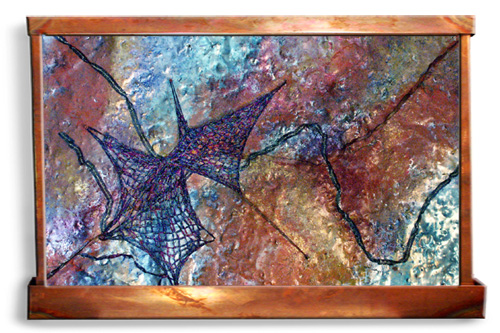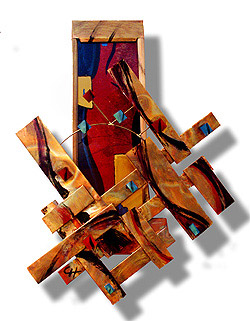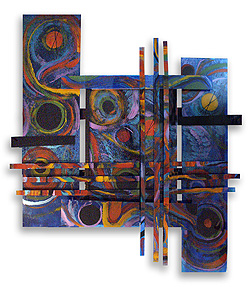
Copper Fountains Use Chemical Reaction for Effects
Former Air Force pilot Henry Harvey's copper sculptures and paints them using a coloring process and chemical reaction. The effects range from black to charcoal grey to gold, chestnut, and pale green, depending on the amount of potash used.
with a passion for sculpting. Stationed in Japan, he would exercise his art between flying missions. “It started out as a hobby, but quickly got more fun ... and a lot more serious.”
 Eventually, he had to choose between flying and sculpting. “I chose sculpting, and 35 years later, it’s still a total blast to get up in the morning and create something from metal.” Eventually, he had to choose between flying and sculpting. “I chose sculpting, and 35 years later, it’s still a total blast to get up in the morning and create something from metal.”
In 1975, Harvey and his wife Pamela opened their first gallery, Harvey Galleries, in Tucson, Ariz. There they learned the ropes of sculpting. In 2003 they made a huge transition, taking their business onto the Internet exclusively. “The first year our business tripled. It’s great!”
Some of the most popular sellers at Harvey Galleries are custom fountains. They offer a variety of indoor and outdoor designs, from “Galaxy” fountains that hang like a painting on a wall to whimsical outdoor statues. Harvey and his team usually start with copper because it’s soft, pliable, and accepts not only paint, but chemical and heat patinas as well. Then they use sulphurated potash mixed with water to create a chemical brew for painting directly on copper. The effects range from black to charcoal grey to gold, chestnut, and pale green, depending on the amount of potash used. Unlike paint, and because the coloring process is a chemical reaction, there is a lag between the time it is applied and the time the color shows up. This reaction time varies from fractions of a second to minutes, depending on the temperature and strength of the brew. The preferred way of stopping the process is to flood it with water, either with a hose or by dunking. To distribute the chemicals, they use many standard artist’s brushes as well as modified spray bottles and devices made in the shop.
 “It’s all a bit of alchemy, actually, because until now there were no books written on potash techniques for painting on copper,” says Harvey. “Often, once the design is created, we spot-heat certain areas with a small torch to create even more interesting effects.” “It’s all a bit of alchemy, actually, because until now there were no books written on potash techniques for painting on copper,” says Harvey. “Often, once the design is created, we spot-heat certain areas with a small torch to create even more interesting effects.”
People interested in potash techniques can now find some answers in Harvey Galleries’ recently published book, “A Passion For Metal,” which covers many of their tips and techniques on sculpting, painting, patinas, and surviving as an artist.

|

